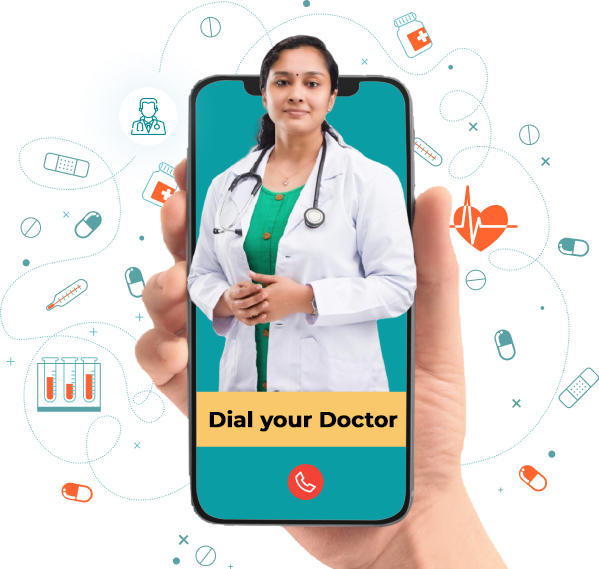Anxiety is one of the most common mental health challenges, affecting millions of people worldwide. With evolving therapeutic approaches and advancements in mental health care, finding the right treatment can feel overwhelming. If you’re struggling with anxiety, you’re not alone—and the good news is that several effective therapies can help.
In this guide, we’ll explore the best therapy options for anxiety in 2025, backed by research and expert recommendations. Whether you’re looking for traditional talk therapy, cutting-edge techniques, or self-help strategies, this guide will help you make an informed decision.
Understanding Anxiety: A Quick Overview
Anxiety disorders encompass a range of conditions, including:
-
Generalized Anxiety Disorder (GAD) – Persistent worry about everyday life.
-
Social Anxiety Disorder – Fear of social interactions and judgment.
-
Panic Disorder – Sudden, intense panic attacks.
-
Phobias – Extreme fear of specific objects or situations.
-
Obsessive-Compulsive Disorder (OCD) – Intrusive thoughts leading to compulsive behaviors.
-
Post-Traumatic Stress Disorder (PTSD) – Anxiety following trauma.
Therapy is often the first-line treatment for anxiety, sometimes combined with medication when necessary. Let’s explore the most effective therapies available today.
1. Cognitive Behavioral Therapy (CBT): The Gold Standard
How It Works
CBT focuses on identifying and changing negative thought patterns and behaviors that contribute to anxiety. It’s structured, goal-oriented, and typically short-term (8-20 sessions).
Why It’s Effective
-
Evidence-Based: Numerous studies confirm CBT’s effectiveness.
-
Skill-Building: Teaches coping mechanisms like cognitive restructuring and exposure techniques.
-
Versatile: Works for GAD, panic disorder, social anxiety, and phobias.
Latest Advancements (2025 Updates)
-
Digital CBT Apps: AI-driven platforms provide real-time feedback.
-
Virtual Reality (VR) Exposure Therapy: Helps patients face fears in a controlled environment.
2. Exposure Therapy: Facing Fears Safely
How It Works
Exposure therapy gradually introduces patients to anxiety triggers in a controlled setting, helping them build tolerance over time.
Best For:
-
Phobias (e.g., fear of flying, heights)
-
PTSD
-
OCD
2025 Trends
-
Gamified Exposure: Mobile apps use interactive challenges to reduce avoidance behaviors.
-
Biofeedback Integration: Wearable devices monitor physiological responses during exposure.
3. Acceptance and Commitment Therapy (ACT)
How It Works
Instead of eliminating anxiety, ACT teaches acceptance of uncomfortable emotions while committing to value-driven actions.
Why It’s Gaining Popularity
-
Mindfulness-Based: Reduces struggle with anxious thoughts.
-
Focus on Values: Encourages meaningful life changes despite anxiety.
Recent Developments
-
Group ACT Programs: Online communities provide peer support.
-
ACT for Workplace Anxiety: Corporate mental health programs now incorporate ACT techniques.
4. Dialectical Behavior Therapy (DBT)
Originally designed for borderline personality disorder, DBT is now widely used for anxiety.
Key Components:
-
Emotion Regulation – Managing intense feelings.
-
Distress Tolerance – Coping with anxiety without harmful behaviors.
2025 Applications
-
Teletherapy Adaptations: Video sessions with DBT skills coaching.
-
DBT for Teens: School-based programs address rising adolescent anxiety.
5. Mindfulness-Based Therapies
How It Works
Mindfulness practices (e.g., meditation, deep breathing) help individuals stay present rather than ruminating on anxious thoughts.
Popular Approaches:
-
Mindfulness-Based Stress Reduction (MBSR)
-
Mindfulness-Based Cognitive Therapy (MBCT)
Latest Trends
-
AI Meditation Coaches: Personalized mindfulness recommendations.
-
Corporate Mindfulness Programs: Employers integrate mindfulness to reduce workplace stress.
6. Psychodynamic Therapy: Exploring Root Causes
How It Works
This therapy examines how past experiences and unconscious thoughts influence current anxiety.
Best For:
-
Long-standing anxiety linked to childhood or trauma.
-
People seeking deeper self-understanding.
Modern Adaptations
-
Short-Term Psychodynamic Therapy (STPP): More focused than traditional psychoanalysis.
-
Online Psychodynamic Sessions: Remote therapy makes it more accessible.
7. EMDR (Eye Movement Desensitization and Reprocessing)
How It Works
EMDR helps process traumatic memories that contribute to anxiety by using bilateral stimulation (e.g., eye movements).
Best For:
-
PTSD
-
Trauma-related anxiety
2025 Innovations
-
Self-Administered EMDR Tools: Guided apps for at-home use (under professional supervision).
-
VR-Enhanced EMDR: Immersive trauma processing.
8. Alternative & Holistic Therapies
A. Art & Music Therapy
-
Helps express emotions non-verbally.
-
Effective for children and adults.
B. Animal-Assisted Therapy
-
Reduces stress through interaction with therapy animals.
C. Exercise & Yoga
-
Physical activity lowers cortisol (stress hormone).
-
Yoga combines movement with mindfulness.
2025 Trends
-
Virtual Reality Relaxation Spaces: Digital environments for stress relief.
-
Psychedelic-Assisted Therapy (Under Research): Studies explore controlled use of psilocybin for anxiety.
How to Choose the Right Therapy for You
Consider:
-
Your Anxiety Type (e.g., social anxiety vs. PTSD).
-
Personal Preferences (structured vs. exploratory therapy).
-
Therapist Compatibility – A strong therapeutic relationship improves outcomes.
-
Accessibility – Online therapy options have expanded in 2025.
Final Thoughts
The best therapy for anxiety depends on your individual needs, but CBT remains the most widely recommended. Newer approaches like ACT, DBT, and tech-assisted therapies (VR, AI) offer exciting advancements.
If you’re unsure where to start, consult a mental health professional for personalized guidance. Remember, seeking help is a sign of strength—not weakness.
Gjds is committed to providing reliable mental health resources. For more expert-backed guides, stay tuned to our blog.



